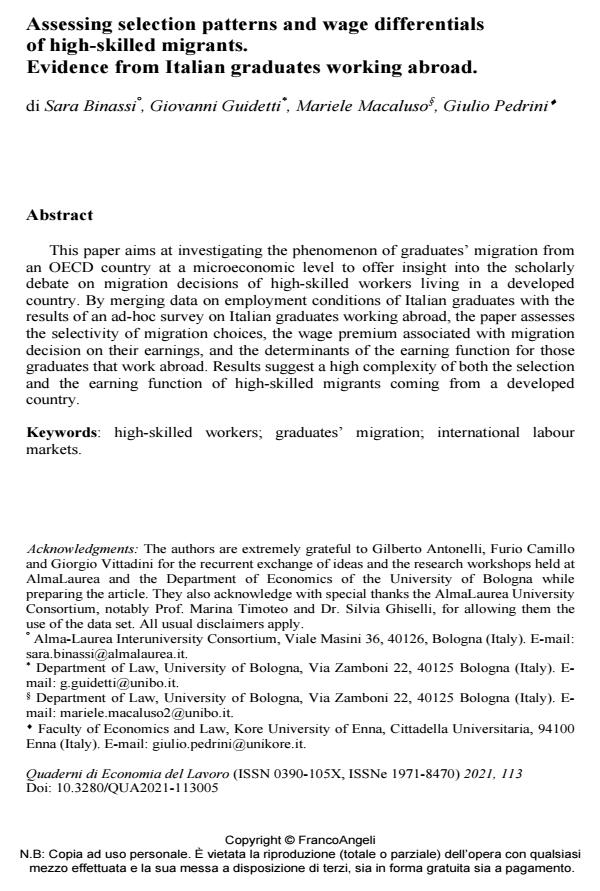Assessing selection patterns and wage differentials of high-skilled migrants. Evidence from Italian graduates working abroad.
Journal title QUADERNI DI ECONOMIA DEL LAVORO
Author/s Sara Binassi, Giovanni Guidetti, Mariele Macaluso, Giulio Pedrini
Publishing Year 2022 Issue 2021/113
Language English Pages 33 P. 83-115 File size 425 KB
DOI 10.3280/QUA2021-113005
DOI is like a bar code for intellectual property: to have more infomation
click here
Below, you can see the article first page
If you want to buy this article in PDF format, you can do it, following the instructions to buy download credits

FrancoAngeli is member of Publishers International Linking Association, Inc (PILA), a not-for-profit association which run the CrossRef service enabling links to and from online scholarly content.
This paper aims at investigating the phenomenon of graduates’ migration from an OECD country at a microeconomic level to offer insight into the scholarly debate on migration decisions of high-skilled workers living in a developed country. By merging data on employment conditions of Italian graduates with the results of an ad-hoc survey on Italian graduates working abroad, the paper assesses the selectivity of migration choices, the wage premium associated with migration decision on their earnings, and the determinants of the earning function for those graduates that work abroad. Results suggest a high complexity of both the selection and the earning function of high-skilled migrants coming from a developed country.
Keywords: high-skilled workers; graduates’ migration; international labour markets.
Sara Binassi, Giovanni Guidetti, Mariele Macaluso, Giulio Pedrini, Assessing selection patterns and wage differentials of high-skilled migrants. Evidence from Italian graduates working abroad. in "QUADERNI DI ECONOMIA DEL LAVORO" 113/2021, pp 83-115, DOI: 10.3280/QUA2021-113005